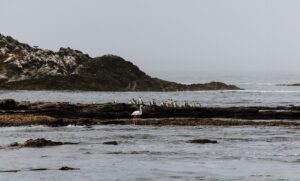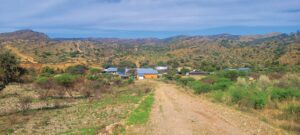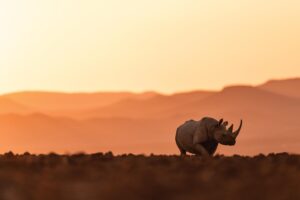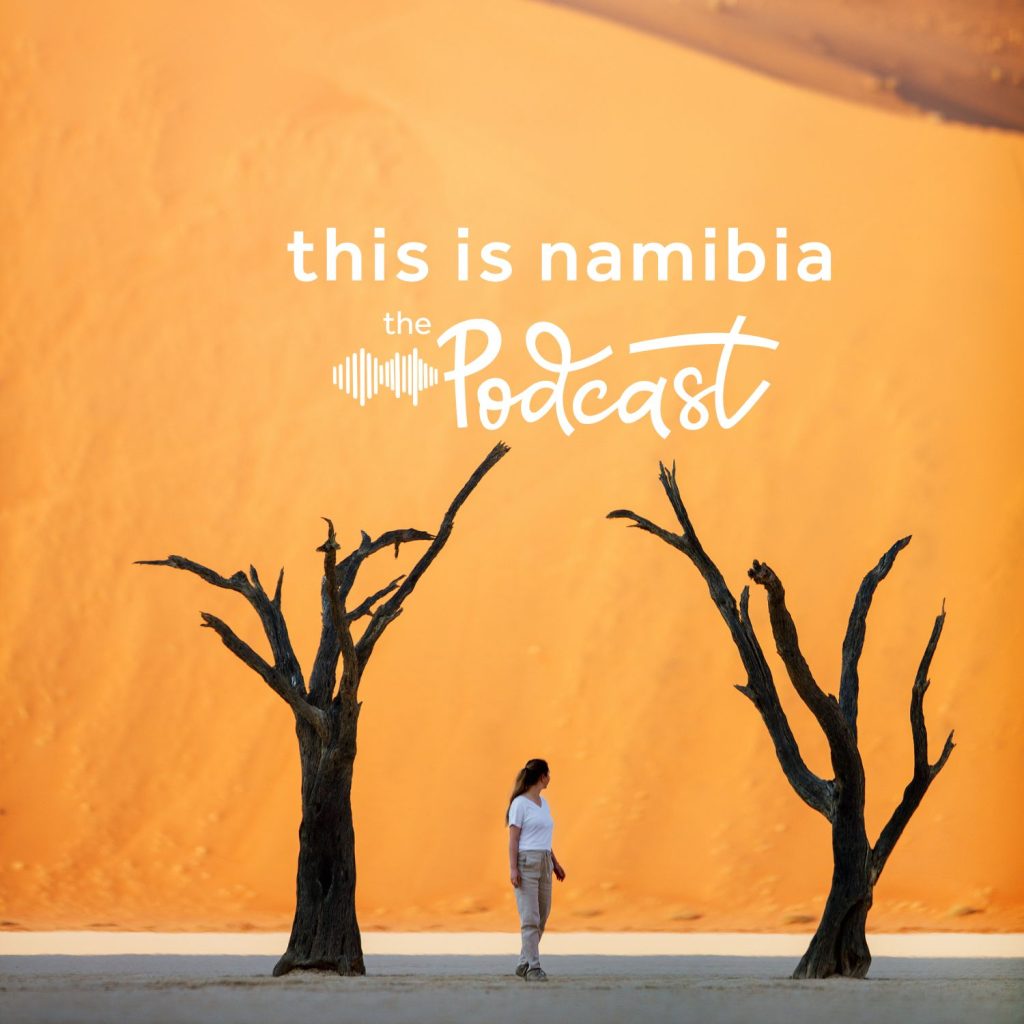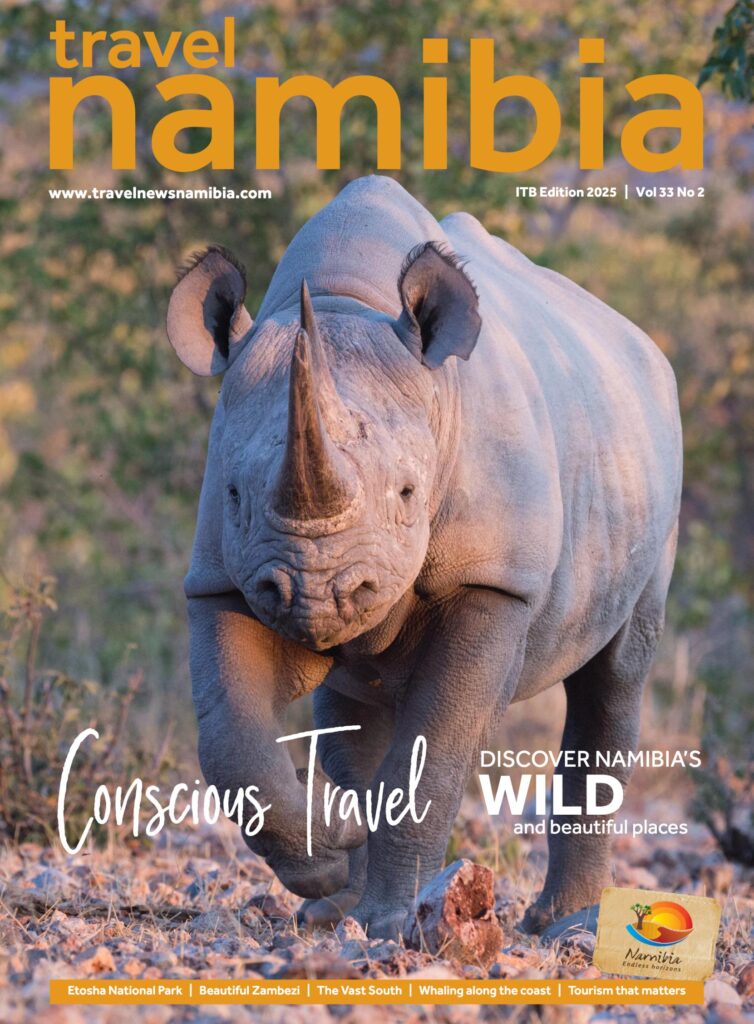
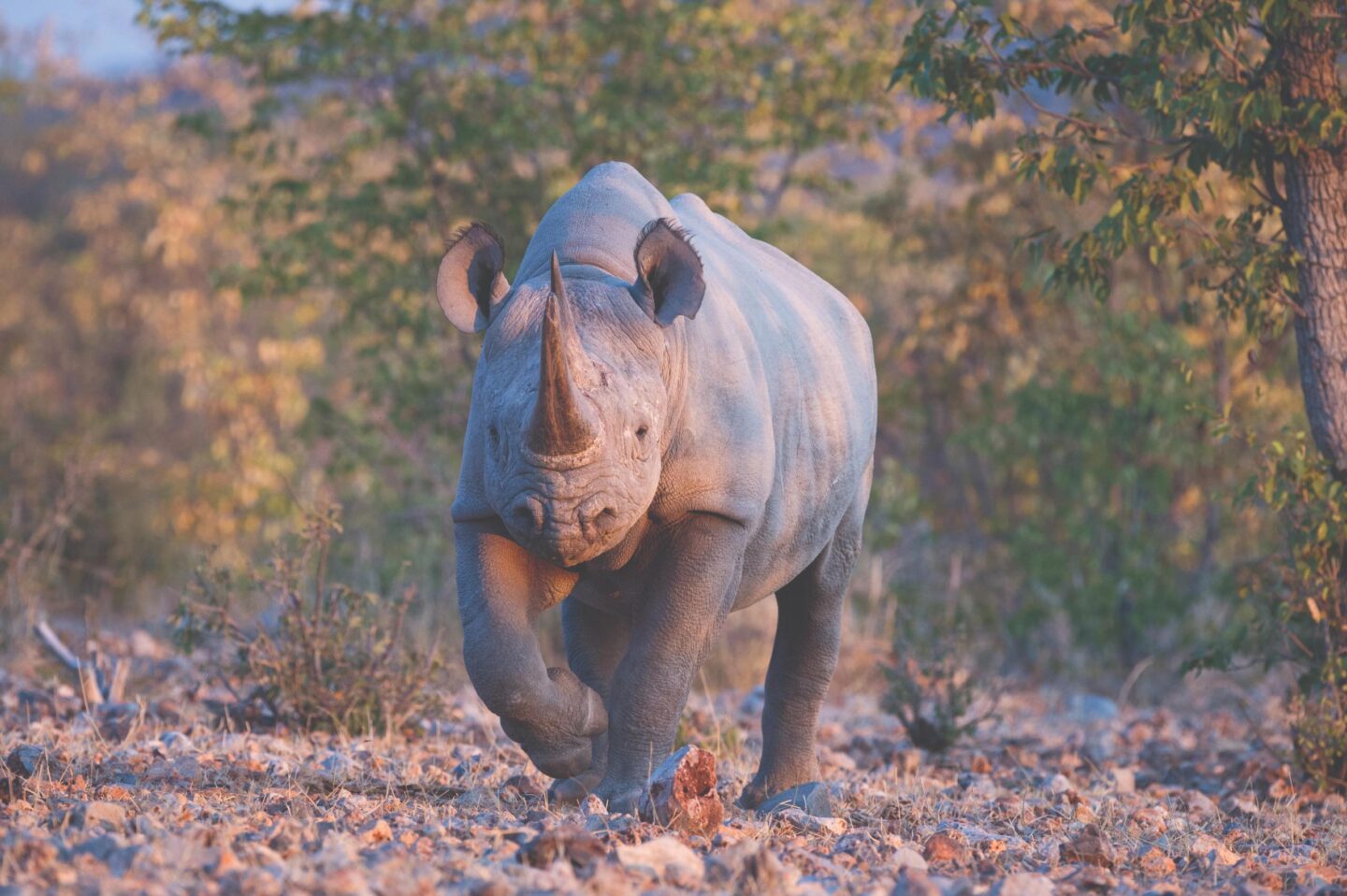
Restoring the
Rhino Kingdom
Text Kirsty Watermeyer
From the ITB 2025 issue
Since its inception in 1993, the Black Rhino Custodianship Programme has positioned Namibia as a global leader in black rhino conservation. The custodians – dedicated individuals who care for these majestic creatures – are the unsung heroes behind this remarkable success story. Their unwavering commitment and resilience not only provide hope for the future of black rhinos but also play a crucial role in safeguarding our planet’s rich biodiversity. This programme is a powerful reminder that, even in the face of daunting challenges, we have the capacity to make a lasting, positive impact on the world around us.
As the Black Rhino Custodianship Programme manager at the Ministry of Environment, Forestry and Tourism, Birgit Kötting has witnessed the incredible transformation of Namibia’s black rhino population firsthand. This journey began in the aftermath of near extinction due to poaching in the late 20th century. Today, Namibia’s vision is to re-establish viable, healthy breeding populations of Diceros bicornis throughout its former range by 2030.
COMING BACK FROM THE BRINK
“Namibia lost nearly all of its black rhinos during the late ’60s and early ’70s,” Birgit explains. “At that time, only a few remained on farmland and in small pockets in the Kunene Region.” In response, the government took action, relocating the surviving rhinos to Etosha National Park, where they began to thrive. “Etosha became a sanctuary for black rhinos, and from there, we were able to reintroduce them to other parks,” she adds.
However, simply relocating rhinos to parks was not enough for long-term success. Recognising the need for a more sustainable approach, the ministry established the Black Rhino Custodianship Programme in 1993. This innovative initiative allowed private landowners to care for these magnificent creatures on their land, while the rhinos remained the property of the government.
The programme has since expanded to include 30 freehold properties and 13 communal custodians, contributing to a significant increase in Namibia’s black rhino population.
ONGAVA’S SUCCESS STORY
One of the first custodians in the programme was Ongava Game Reserve. Meaning “rhino” in the Herero language, Ongava has become a sanctuary where these large mammals can thrive in their natural habitat. “Ongava has implemented top-tier anti- poaching measures and monitoring systems, which are crucial for effective conservation,” Birgit explains. “Good monitoring is the foundation of anti-poaching. If you know what you have and where they are, you can protect them more effectively.”
Birgit adds, “Ongava is one of our greatest success stories.” Their dedication has led to significant population growth, creating the need for land expansion to accommodate the thriving rhino community. The reserve’s success has brought about a new challenge: space for its growing rhino population. As a result, Ongava is now undergoing expansion. Thankfully, its visionary owners prioritise rhino conservation, choosing to expand the reserve’s territory over pursuing profit.
WORLD’S BEST BLACK RHINO GROWTH RATE
The Black Rhino Custodianship Programme has relocated breeding populations of black rhinos to suitable habitats, establishing free-ranging populations. This initiative relies on landholders who are both willing and able to take on the responsibility of providing care and security for the rhinos. Custodians are tasked with monitoring the rhinos, ensuring they have access to food and water, and safeguarding them to the best of their ability.
The success of the Black Rhino Custodianship Programme is evident in its impressive growth rate. Since its inception in 1993, the programme has seen the black rhino population grow from just 11 translocated individuals to around 750 today.
Ongava is a sanctuary where the spirit of conservation meets the majesty of the wild. As one of the largest rhino custodianships in Namibia, it plays a vital role in safeguarding these iconic creatures. It is also one of the few private game reserves in southern Africa where guests can witness both black and white rhinos in their natural habitat – a rare privilege that few will ever experience.
With four exquisite lodges nestled within the reserve, Ongava offers a truly intimate experience. It welcomes a limited number of guests to ensure peace and exclusivity. Each lodge is a masterpiece in itself, seamlessly blending luxury with nature. They evoke the timeless essence of the bush while offering modern comforts. The architecture mirrors the harmony between age- old traditions and contemporary design, creating an atmosphere of quiet elegance and deep respect for the land.
This remarkable increase highlights the programme’s global significance, especially in the face of escalating poaching threats. As Birgit puts it, “The custodianship programme boasts the best growth rate for black rhinos in the world.”
Reflecting on her journey, Birgit expresses the profound joy of working with these incredible animals. “They’re intelligent and surprisingly trusting,” she says, recalling moments spent with them in the field. Birgit shares many anecdotes about the unique personalities of each rhino, noting how, after spending time with them in a boma setting before translocation, she learned that rhinos can recognise you by the sound of your voice. She also observed that female rhinos tend to be more independent, while the males are often more affectionate.
In a world often filled with disheartening news, it is inspiring to witness places like Ongava Game Reserve, where dedicated individuals are creating a conservation success story that will resonate for generations. It serves as a powerful reminder that, even in the face of daunting challenges, we have the power to make a positive impact. This great journey is one where a vision was transformed into a reality, and it is truly a story worth celebrating. TN
More to explore

Discover Airlines launches a new direct flight between Windhoek and Munich
